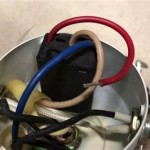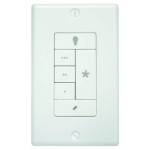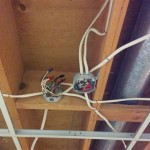Essential Aspects of Removing a Ceiling Fan and Installing a Light Fixture
Remodeling a space often involves replacing outdated lighting fixtures or fans. Understanding the essential aspects of removing a ceiling fan and installing a light fixture is crucial for ensuring a safe and effective outcome. This article will delve into the key steps, safety considerations, and technical aspects of these tasks, providing a comprehensive guide for homeowners and professionals alike.
Safety Considerations
Electrical work can be hazardous, so safety should always be the top priority. Before starting, turn off the power at the circuit breaker panel. Use a non-contact voltage tester to verify that the wires are not live. Wear safety glasses and gloves to protect yourself from potential hazards like debris or broken glass.
Removing the Ceiling Fan
1. Disconnect the Wires: Use a screwdriver to remove the screws holding the canopy in place. Carefully disconnect the wires by twisting the wire nuts counterclockwise. Tape the wires securely to prevent accidental contact.
2. Remove the Mounting Bracket: Locate the screws securing the mounting bracket to the ceiling. Remove the screws and carefully lower the fan, supporting it until it is completely detached.
Installing the Light Fixture
1. Install the Mounting Plate: Place the mounting plate on the ceiling and mark the screw holes. Drill pilot holes and use screws to secure the plate.
2. Connect the Wires: Connect the wires from the fixture to the wires in the ceiling box. Black wires connect to black wires, white to white, and green (ground) to bare copper or green.
3. Secure the Fixture: Lift the light fixture into place and align it with the mounting plate. Secure it by tightening the screws or using a twist-lock mechanism.
Technical Considerations
1. Fixture Weight: Ensure that the light fixture you choose is compatible with the weight capacity of the ceiling box. Exceeding the weight limit can compromise safety.
2. Wire Gauge: The wire gauge determines the amount of current it can handle. Match the wire gauge of the new light fixture to the existing wires or upgrade if necessary.
3. Dimming Compatibility: If you desire a dimmable light, ensure that the fixture and the dimmer switch are compatible. Improper matching can cause flickering or damage.
Conclusion
Removing a ceiling fan and installing a light fixture can be accomplished safely and efficiently by following these essential steps. By prioritizing safety, carefully disconnecting and connecting wires, and considering technical factors, homeowners can achieve a successful outcome. Whether undertaking this task independently or seeking professional assistance, a comprehensive understanding of these aspects is vital for ensuring a satisfactory and hazard-free result.

Replacing A Ceiling Fan Light With Regular Fixture Jlc
Replacing A Ceiling Fan Light With Regular Fixture Jlc

How To Replace A Ceiling Fan With Pendant Light

How To Replace A Ceiling Fan With Pendant Light

Replace Light Fixture W Ceiling Fan R Askanelectrician

How To Replace A Ceiling Fan Light Kit Smafan Com

4 Ways To Replace A Light Bulb In Ceiling Fan Wikihow

How To Replace A Ceiling Fan Zillow

4 Ways To Replace A Light Bulb In Ceiling Fan Wikihow

Trouble Replacing Ceiling Fan With Light Fixture R Electrical
Related Posts








